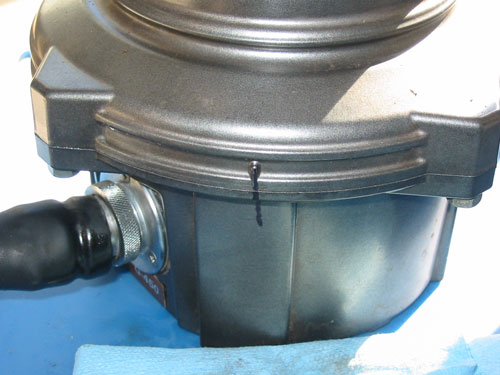Tektronix 2465A Oscilloscope Repair - Part 13
Tektronix 2465A Oscilloscope Repair - Part 13
Dynamic Centering, DC Balance and X-Y Phase Differential
I got in a hurry and forgot to get photos of this procedure. But all went as described in the manual.
The first step involve inputting a 5 division 6-Mhz sine wave to the scope with the settings as described in the manual. I moved the intensity control full CCW to Full CW, back and forth, looking for any shifting of the display. There was none that I could see. If there had been, I could have adjusted R3401 and R3407 to minimize it.
In Step 2, R618 may be adjusted for minimum vertical readout jitter with a full scale pulse waveform present. I was able to tweak the adjustment to create jitter in the readout, and adjust it back to stable.
Similarly, with the scope in x10 mode, and Delta-T cursors displayed, R805 could be adjusted for minimum horizontal jitter of the readout characters.
In step 3, the DC balance is adjusted by the scope automatically, and checked by moving the volts/div control through all of it’s settings and looking for any shift in the trace. There was none detected.
In Step 4, the X-Y phasing is checked by putting the scope in X-Y mode, and feeding a 1 Mhz sine wave to channel 1. The generator was adjusted for a 6 division signal on the scope, and C-118 could have been adjusted for minimum opening in the ellipse (there was no opening).
Then, the frequency is changed to 2-Mhz, and the waveform ellipse is checked for an opening of less that 0.3 division. (There was an opening, maybe 0.1 division).
And that concludes the poor man’s calibration and adjustment of the Tektronix 2465A Oscilloscope.
It was not a simple process, and there were a lot of workarounds for not having the correct test equipment to do the calibration. But I started with an unusable scope, in that the trace would jump off the screen when moving the Volts/Div of the various channels, the bandwidth was limited to about 8 Mhz, and the readout was almost unusable, because of the error condition with the diagnostic failure mesage.
Now, the scope is totally usable, and reasonably calibrated, with the exception that it does not have the full 350 Mhz bandwidth available yet. It is limited to about 150 Mhz of “calibrated” bandwidth, meaning that I can trust the level displayed up to over 100 Mhz. All readouts now work, and no diagnostic errors are presented on power up.
As some would say, that’s good enough for this part of town…




Comments
Post a Comment